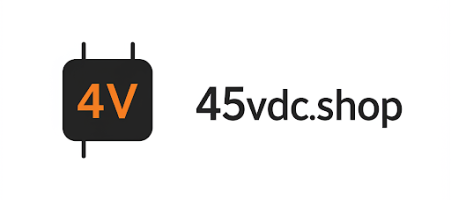Navigating the world of small business loans can feel like wading through alphabet soup. You’re bombarded with interest rates, APRs, and repayment schedules, all while trying to keep your business afloat. This article cuts through the jargon and equips you with the knowledge to understand and negotiate the best possible small business loan terms. We’ll explore core arguments, practical methods, personal insights, and expert advice to help you make informed decisions. This guide will solve 3 core problems: 1) Understanding complex loan terminology; 2) Identifying favorable vs. unfavorable loan terms; and 3) Developing a negotiation strategy for better terms.
Before you even think about applying for a loan, understanding the key terms is crucial. This isn’t just about knowing what they mean; it’s about understanding how they impact your business’s bottom line.
What’s the Difference Between Interest Rate and APR?
This is one of the most common points of confusion. The interest rate is the cost of borrowing the principal amount. It’s expressed as a percentage. APR, or Annual Percentage Rate, includes the interest rate plus any fees associated with the loan, like origination fees or closing costs. This is why APR is almost always higher than the stated interest rate.
Why APR is Your True Cost
Always focus on the APR when comparing loan options. It gives you a more accurate picture of the total cost of the loan over its entire term. A lower interest rate might seem appealing, but if the loan comes with hefty fees, the APR could be significantly higher than a loan with a slightly higher interest rate but fewer fees.
Fixed vs. Variable Interest Rates: Which is Right for You?
A fixed interest rate stays the same throughout the life of the loan. This provides predictability and makes budgeting easier. A variable interest rate fluctuates based on market conditions, usually tied to a benchmark rate like the prime rate. While variable rates can be lower initially, they carry the risk of increasing, potentially making your payments more expensive over time.
Loan Term and Repayment Schedule
The loan term is the length of time you have to repay the loan. A shorter term means higher monthly payments but less interest paid overall. A longer term means lower monthly payments but more interest paid over the life of the loan. Carefully consider your cash flow and ability to repay when choosing a loan term. The repayment schedule dictates how often you’ll make payments (monthly, quarterly, etc.).
Understanding the terms is only half the battle. You also need to know how to negotiate for better ones. Don’t be afraid to advocate for your business!
Know Your Credit Score and Financial Standing
Lenders assess risk based on your credit score and financial health. A strong credit score and solid financials give you more leverage to negotiate better terms. Before applying, check your credit report for errors and ensure your financial statements are accurate and up-to-date.
Shop Around and Compare Offers
Never settle for the first offer you receive. Get quotes from multiple lenders, including banks, credit unions, and online lenders. Comparing offers allows you to see what terms are available and identify areas where you can potentially negotiate.
Don’t Be Afraid to Ask for a Better Rate
It might seem daunting, but simply asking for a lower interest rate can sometimes be effective. Point out your strong credit history, stable business finances, and the competitive offers you’ve received. Be prepared to provide documentation to support your claims.
Consider Collateral and Personal Guarantees
Offering collateral, such as equipment or real estate, can reduce the lender’s risk and potentially lead to better terms. A personal guarantee means you’re personally liable for the loan if your business defaults. Weigh the risks and benefits carefully before offering either.
Understand the Fine Print: Avoiding Hidden Fees
Read the loan agreement carefully before signing anything. Pay close attention to any fees, such as prepayment penalties (fees for paying off the loan early), late payment fees, or origination fees. Ask the lender to explain anything you don’t understand.
As someone who’s secured funding for multiple startups, I’ve learned firsthand that the loan process isn’t always straightforward. Here are some unconventional truths I’ve discovered:
The “Relationship Discount” is Real
Building a relationship with a local bank can pay dividends. They’re often more willing to work with you and offer better terms if they know your business and you’ve established a track record. I once secured a significantly lower interest rate simply because I’d been a loyal customer for years. It’s something you won’t find advertised, but cultivating these relationships can be incredibly valuable.
Banks Aren’t Always the Best Option for Startups
While banks offer stability, they can be risk-averse when it comes to lending to new businesses. Don’t overlook alternative lenders, such as online lenders or crowdfunding platforms, which may be more willing to take a chance on a startup. They often have more flexible terms and faster approval processes.
Cash Flow Projections Are Your Secret Weapon
Lenders want to see that you have a plan for repaying the loan. Develop realistic and detailed cash flow projections that demonstrate your ability to generate revenue and meet your debt obligations. This shows lenders you’ve thought things through and are a responsible borrower. I’ve found that even if my projections are slightly optimistic, the act of creating them forces me to truly understand the inner workings of the business, proving confidence in my business.
A Table for Loan Comparison
Here is a simple table illustrating how different loan terms impact the total cost of a $50,000 loan:
| Loan Term (Years) | Interest Rate | Monthly Payment | Total Interest Paid |
|---|---|---|---|
| 3 | 8% | $1,567.67 | $6,436.12 |
| 5 | 8% | $1,013.82 | $10,829.20 |
| 7 | 8% | $766.48 | $14,384.56 |
This table clearly shows the trade-off between monthly payment and total interest paid.
I’ve spent over a decade in the entrepreneurial world, securing funding for various ventures, from tech startups to brick-and-mortar businesses. This experience has given me a deep understanding of the lending landscape and the strategies that work. This isn’t just theoretical knowledge; it’s based on real-world successes and failures. Always do your own research and consult with financial professionals before making any decisions. For more in-depth information, consider resources like the U.S. Small Business Administration (https://www.sba.gov/) and Investopedia (https://www.investopedia.com/).
About us
Welcome to 45vdc.shop – Your Ultimate Resource for Stock Market & Loan Mastery! Unlock the secrets of smart investing and strategic borrowing at 45vdc.shop. Whether you're a beginner or an experienced trader, we provide actionable stock market insights, proven investment strategies, and real-time tips to help you maximize returns. Need financial flexibility? Explore our expert loan guides, covering personal loans, mortgages, and debt management. Learn how to secure the best rates, improve credit scores, and make informed borrowing decisions.

